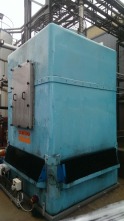Last year it was announced that the Government had introduced a new consultation which sets out its plans for the Future Homes Standard. This includes proposed options to increase the energy efficiency requirements for new homes from this year. 
The aim of this standard is to bring all of the UK’s greenhouse gas emissions to net zero by 2050, a target that is one of the most ambitious in the world. Homes, both new and existing account for 20% of emissions, and despite progress reducing those emissions much more needs to be done.
With climate change a growing issue and the release of the CCC (Climate Change Committee) report last year, heating experts Tansun are raising awareness about the requirements of the standard and discussing how the company’s infrared heating products can help homes comply. 
As part of the journey to 2050, the UK Government has committed to introducing the Future Homes Standard in 2025, and expects that an average home built using the guidelines will have 75-80% less carbon emissions than one built to current energy efficiency requirements.
It is anticipated this will be achieved through very high fabric standards and a low carbon heating system. Proposals indicate the need to ban fossil fuel heating systems, such as gas boilers, from new homes by 2025 and the necessity to replace them with low carbon heating systems. This means a new home built to the Future Homes Standard might also have triple glazing and standards for walls, floors and roofs that significantly limit any heat loss.
Chapter 2 of the Future Homes Standard refers to the roll out of low carbon heating systems to provide world leading levels of energy efficiency. An excellent example of a sustainable heating system is infrared heating panels.
Using the infrared panels, Tansun is able to help building and construction firms to meet the guidelines highlighted in the standard. The highly energy efficient infrared technology in the panels will help companies to comply with the legislation and ensure that the UK meets its climate change targets.
An expert in the field, Tansun is the UK’s leading infrared heater manufacturer. With over 35 years of experience in the heating industry, the company’s vast ranges of infrared heaters are manufactured to the highest quality and provide optimum heat performance all year round.
Tansun’s infrared panel heaters are highly efficient because they only heat targeted areas instead of a whole room. Infrared heaters also produce immediate heat, therefore consuming less energy than standard heaters that require warm up time, and are manufactured to offer optimum heat performance all year round.
Tansun invests a lot of time in research and development and believes that technology can only be developed if there is a true understanding of the concept and the purpose. In order to adapt with ever changing regulations that affect heating products, Tansun has made compliancy its priority.
The country needs to help the industry reach a position where it can deliver in 2025. The proposal of introducing a meaningful but achievable uplift to energy efficiency standards by 2020 is to work as a stepping stone to the Future Homes Standard will help to make new homes more energy efficient and future-proof them in readiness for low carbon heating systems.
Tansun’s panel heaters can be installed and programmed to provide heat exactly where it’s needed with minimum waste and can be controlled with more precision than almost any other heating system on the market. Infrared heat warms everything in its path without losing heat to other spaces, and combined with the Tansun range of energy saving controllers which include time lag switches/motion detectors and dimmer devices provides the perfect heating solution. With Tansun zoning and control, energy efficiency is optimised, heating bills are reduced and owners can boast a truly eco-friendly heating system.
The timer is also perfect for programmability, a function that automatically de-activates the product at intervals throughout the day. This is known as a run-back timer.
Tansun has also designed an app for controlling its heaters. This allows for remote interaction outside the building where the product is installed so that users can control the heating coming on.
Free to use, the launch of the app brings Tansun into the era of IoT enabled infrared heating systems. Its features include being able to turn heaters on and off, control the power level at 50%, 75% or 100% and power control of individual heating elements. Users can switch between up to six connected heating systems using a single remote, making it hassle-free to operate multiple heaters from more than one device.
All of Tansun’s products are made in the UK and are designed using premium components. The company has been established for 35 years and pioneered the concept of infrared electric heaters alongside Philips technology. Tansun has the largest range of domestic, commercial and industrial infrared heaters in the world, providing maintenance-free, safe and healthy shortwave heaters for many different types of heating applications.
Further information is available from Tansun on 0121 580 6200, by emailing sales@tansun.com or by visiting the company’s website at www.tansun.com














